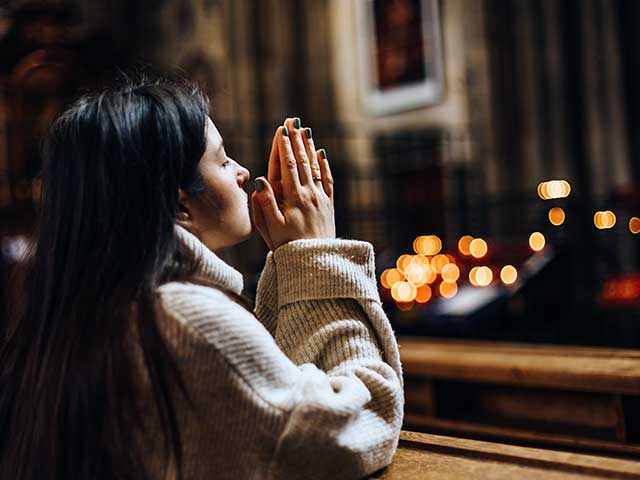Religion has been an integral part of human existence for millennia, shaping our beliefs, values, and societal norms. Throughout history, the way humans practice their faith has evolved, reflecting changes in technology, culture, and society. In this blog post, we will explore the fascinating journey of the evolution of religious practices, from ancient rituals to the integration of cutting-edge technology.
Ancient Rituals and Traditions
The roots of religious practices can be traced back to the dawn of human civilization. Ancient cultures across the globe developed intricate rituals and traditions to connect with the divine. These practices often centered around nature, celestial events, and communal gatherings. Examples include the construction of Stonehenge by the Druids, the Mayan civilization’s elaborate ceremonies during solar eclipses, and the rituals of ancient Hinduism.
The Role of Written Texts
The introduction of written texts marked a significant turning point in religious evolution. Sacred scriptures, such as the Bible, Quran, Torah, and Bhagavad Gita, became cornerstones of religious practice. These texts provided a structured framework for beliefs and rituals and allowed for the dissemination of religious knowledge across generations. The printing press, invented by Johannes Gutenberg in the 15th century, further accelerated the spread of religious texts, making them accessible to a wider audience.
The Protestant Reformation
The 16th-century Protestant Reformation had a profound impact on the practice of Christianity. Martin Luther’s translation of the Bible into vernacular languages allowed individuals to engage directly with religious texts, encouraging personal interpretations and challenging the authority of the Catholic Church. This shift towards individualism in religious practice paved the way for a more diverse range of beliefs and practices within Christianity.
The Industrial Revolution and Secularization
The Industrial Revolution brought about profound changes in society, including the decline of agrarian communities and the rise of urbanization. As people moved away from traditional rural lifestyles, religious practices began to adapt to the modern world. While religion remained important to many, secularization led to a decrease in the influence of religious institutions over various aspects of life.
The Revival of Rituals
While secularization influenced some segments of society, others experienced a resurgence in traditional religious practices. The late 19th and early 20th centuries saw the growth of religious movements like the Pentecostal and Charismatic movements, which emphasized ecstatic experiences and fervent rituals. These movements demonstrated that, even in the face of modernization, the power of ritual and religious experience remained deeply ingrained in human nature.
The Rise of Mass Media and Broadcasting
The 20th century witnessed the proliferation of mass media, including radio and television. Religious leaders quickly recognized the potential of these mediums to reach a vast audience. Televangelists like Billy Graham and Oral Roberts used television to spread their religious messages, further blurring the lines between traditional religious practices and modern technology.
The Internet and Digital Religion
The 21st century brought about the most significant transformation in the evolution of religious practices—the integration of technology and the internet. The digital age has given rise to a new form of religiosity, often referred to as “digital religion” or “cyber spirituality.” Online communities, social media platforms, and websites dedicated to religious content have become essential tools for connecting with like-minded believers, accessing religious texts, and participating in virtual religious rituals.
Virtual Worship Services and Online Rituals
One of the most notable developments in digital religion is the proliferation of virtual worship services. Especially in times of crisis, such as the COVID-19 pandemic, religious communities have turned to live streaming and video conferencing platforms to continue their religious practices. Online rituals, including virtual communion and prayer meetings, have become commonplace, allowing individuals to maintain their faith while adhering to social distancing guidelines.

Religious Apps and Augmented Reality
The rise of smartphones has led to the creation of religious apps that cater to various faiths. These apps provide users with access to religious texts, prayer guides, and meditation tools, enabling them to integrate their faith into their daily lives. Furthermore, augmented reality (AR) technology has allowed for immersive religious experiences, such as virtual pilgrimages and interactive religious art installations.
Artificial Intelligence and Spiritual Guidance
Artificial intelligence (AI) is also making inroads into the realm of religion. Some AI-powered chatbots and virtual assistants have been developed to provide spiritual guidance, answer religious questions, and offer prayers. While these AI entities cannot replace human religious leaders, they offer a unique way for individuals to seek support and information about their faith.
Challenges and Ethical Considerations
As technology continues to shape the evolution of religious practices, it raises important ethical questions. Concerns include the potential for misinformation, privacy issues in online religious communities, and the impact of AI on religious authority. Balancing the benefits of technology with the preservation of the authenticity of religious experience is an ongoing challenge. Check out this useful link to get more tips and information about the evolution of religious practices.
Conclusion
The evolution of religious practices from ancient rituals to modern technology is a testament to humanity’s ability to adapt and innovate in response to changing circumstances. While traditional rituals and sacred texts continue to hold significance, the integration of technology has opened new avenues for spiritual exploration and community engagement. As we move further into the digital age, the intersection of faith and technology will undoubtedly continue to shape the religious landscape in ways we can only begin to imagine.




